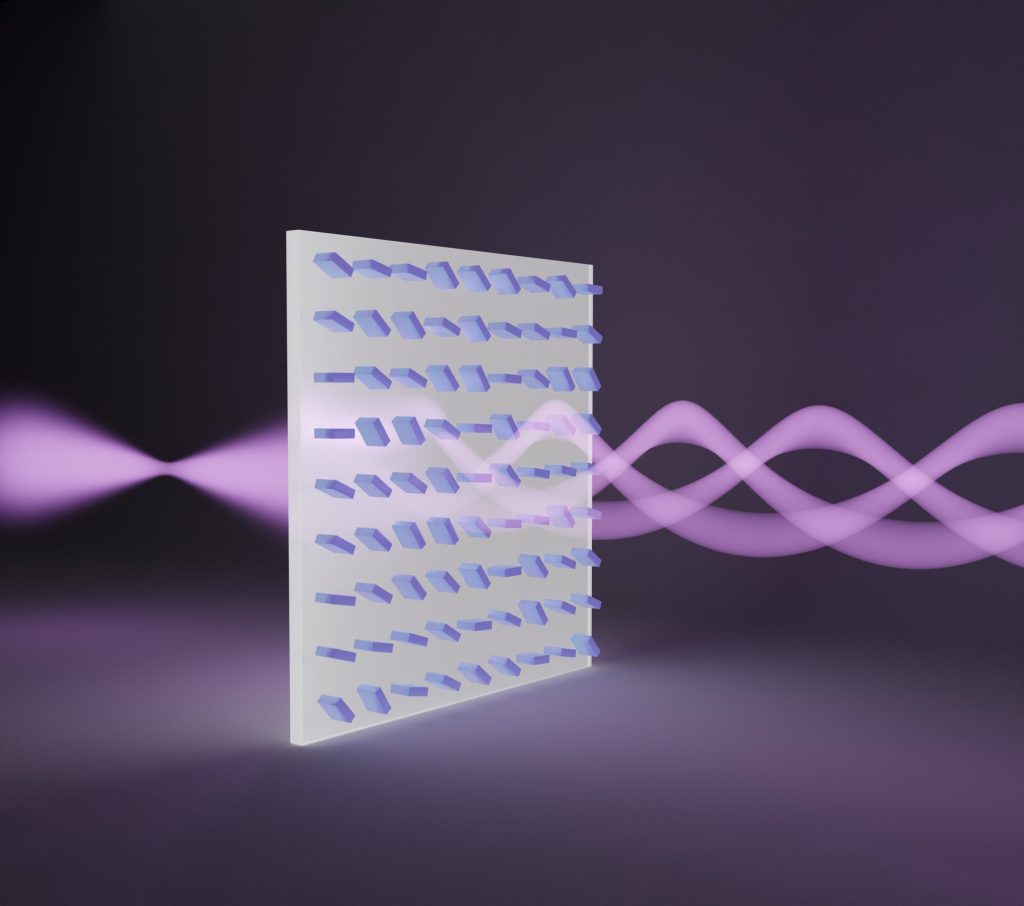by
TMOS researchers have developed a metasurface-enabled solenoid beam that can attract particles, which could revolutionize non-invasive medical procedures such as biopsies. The technique uses a thin layer of nanopatterned silicon, offering a lightweight, portable alternative to the bulky equipment previously required for such beams. Credit: University of Melbourne
TMOS researchers have developed a lightweight, portable tractor beam that could transform non-invasive medical procedures.
Researchers at TMOS, ARC’s Center for the Study of Transformable Meta-Optical Systems, have made important first progress in creating tractor beams made possible by metasurfaces. These beams of light, capable of attracting particles, are inspired by fictional tractor beams found in science fiction.
According to published research ACS PhotonicsA team from the University of Melbourne describes a solenoid beam generated using silicon metasurfaces. Solenoid beams have so far been created by bulky specialized light modulators (SLMs), but the size and weight of these systems meant the beams could not be used in handheld devices. Metasurfaces are nanopatterned layers of silicon that are only about 1/2000 of a millimeter thick. The team hopes that metasurfaces could one day be used to perform biopsies in a non-invasive way, unlike current methods such as forceps, which cause trauma to the surrounding tissue.
Light rays exert a pushing force, tending to push particles away from the light source. Solenoid beams have been proven to attract particles towards a light source. Think of how a drill pulls wood chips towards the drill bit; a solenoid beam works in a similar way.
Advantages of the new solenoid beam
This particular solenoid beam has several advantages over previously generated solenoid beams, including that the input beam requirements are more flexible than previous beams, no SLM is required, and the size, weight, and power requirements are significantly smaller than previous systems.
The metasurface was created by mapping a phase hologram of the desired beam, which was then used to create the pattern. The metasurface was then fabricated from silicon using electron beam lithography and reactive ion etching. As the input beam (in this case a Gaussian beam) passed through the metasurface, a large fraction of it (about 76%) was transformed into a solenoidal beam, which bent away from the untransformed beam, allowing the researchers to work without any obstructions. The researchers were able to characterize the beam at a distance of 21 centimeters.
Lead researcher Mariam Setareh said: “The compact size and high efficiency of this device could lead to innovative applications in the future. The ability to attract particles using metasurfaces could potentially impact the field of biopsies by providing pain relief in a less invasive way.”
“We are excited to explore the performance of our device in manipulating particles, which could provide valuable insights,” Setareh said.
“The next step in this research will be to experimentally demonstrate the beam’s ability to attract particles, and we will be excited to share the results when we have them,” said lead investigator Ken Crozier.
“This work opens up new possibilities for using light to apply forces to small objects,” Crozier said.
Reference: “Highly efficient triple-helix solenoid beams generated by dielectric metasurfaces” by Maryam Setareh, Robert De Gille, Jasper Cadusch, Dandan Wen, Sejeong Kim, Kenneth B. Crozier, July 17, 2024, ACS Photonics.
DOI: 10.1021/acsphotonics.4c00874


